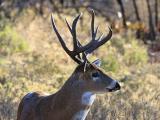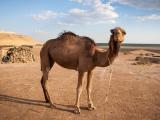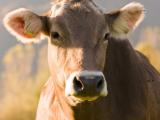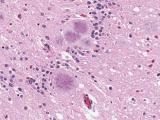Mar 23, 2006 (CIDRAP News) Worldwide cases of bovine spongiform encephalopathy (BSE), or mad cow disease, have declined about 50% per year over the last three years, the United Nations Food and Agriculture Organization (FAO) announced today.
"In 2005, just 474 animals died of BSE around the world, compared with 878 in 2004 and 1,646 in 2003, and against a peak of several tens of thousands in 1992," the FAO said. The figures were compiled by the World Organization for Animal Health (OIE).
Deaths caused by the human form of BSE, variant Creutzfeldt-Jakob disease (vCJD), have also been dropping, the FAO said. There were five deaths in 2005, compared with 9 in 2004 and 18 in 2003. All the deaths occurred in the United Kingdom, the country hit hardest by both BSE and vCJD.
"It is quite clear that BSE is declining and that the measures introduced to stop the disease are effective," said Andrew Speedy, an FAO animal production expert quoted in the announcement. "But further success depends on our continuing to apply those measures worldwide."
The FAO announcement comes 10 days after US authorities confirmed the nation's third BSE case in a cow in Alabama. The cow, which couldn't walk, was euthanized and buried on the farm, after samples were taken for testing, according to the US Department of Agriculture (USDA).
After the cow tested positive, USDA officials dug up the animal to verify its age and determined that it was at least 10 years old. That meant it had been born before the 1997 US ban on putting cattle protein into cattle feed, considered the most likely transmission pathway for BSE, the USDA said in a Mar 16 update.
USDA investigators have found a 6-week-old calf belonging to the BSE-infected cow and are looking for a bull calf that was born to the cow last year, the agency said in recent updates. The 6-week-old calf has been moved to the USDA's national laboratory in Ames, Iowa, for observation.
In today's FAO statement, Speedy said a vital part of BSE detection and control is "a tracking system that allows animals to be identified all the way from birth to shopping basket. This has been adopted across Europe but has yet to be implemented partially or fully in a number of other countries."
The United States is working on a voluntary national cattle identification system but has not yet implemented it.
See also:
Mar 23 FAO statement on mad cow disease
http://www.fao.org/newsroom/en/news/2006/1000258/index.html
Mar 16 USDA update on Alabama BSE case
http://www.aphis.usda.gov/newsroom/content/2006/03/bse_al-epi_vs.shtml
Mar 9 USDA update on its National Animal Identification System
http://www.aphis.usda.gov/newsroom/content/2006/03/aintag_vs.shtml














